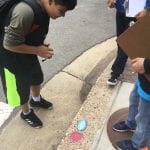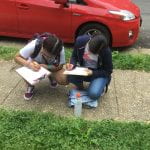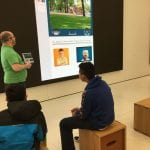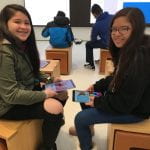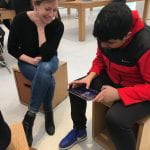The students were introduced to human impacts on the environment within their community. After doing some background research, the students did a walking field trip of their neighborhood to do an environmental survey. Based on these results the students decided to form three groups to best change/influence the problems they saw. The first group chose to focus on creating a litter pick-up event, with the goal to move their neighborhood towards long-term change in attitude towards litter. The second group chose to focus on the AstroTurf they saw on soccer fields and yards around the city. Their goal is to research sustainable AstroTurf alternatives that counteract erosion and present these alternatives to their local parks department and other stakeholders. The last group is working on public relations for the whole group, including branding and outreach.
Cohort member: Emily Lott
Students: 7th grade English Language Learners at George Washington Middle School
Essential questions:
How do we make changes to our community to prevent, limit, or create positive impacts of humans on the local ecosystems?
7th grade Life Science Standards:
LS.12 The student will investigate and understand the relationships between ecosystem dynamics and human activity. Key concepts include
a) food production and harvest;
b) change in habitat size, quality, or structure;
c) change in species competition;
d) population disturbances and factors that threaten or enhance species survival; and
e) environmental issues (water supply, air quality, energy production, and waste management).
LS.7 The student will investigate and understand that organisms within an ecosystem are dependent on one another and on nonliving components of the environment. Key concepts include
a) the carbon, water, and nitrogen cycles;
b) interactions resulting in a flow of energy and matter throughout the system; complex relationships within terrestrial, freshwater, and marine ecosystems;
